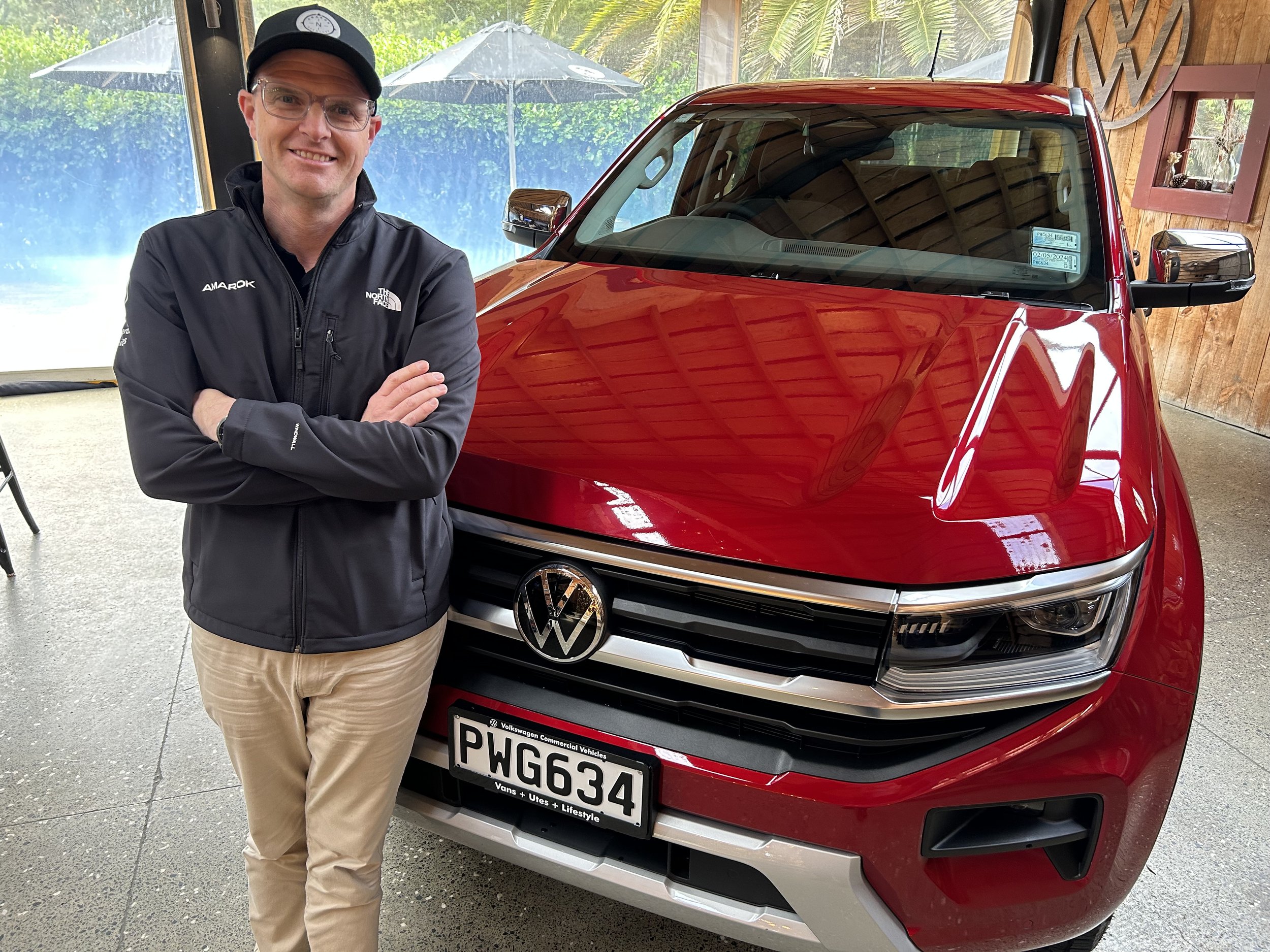Petrol Amarok a market test
/Aventura is taking a sporty Ford powerplant – but it’s not the big one.
AT BEST one in every 10 Amarok fans will buy into it – but that’s still a punt worth taking.
That, plus the derivative’s ready availability, makes offering a petrol engine as an alternate choice to turbodiesels in Volkswagen’s new one-tonner worthwhile.
So explains Scott Duggan, national sales manager for Volkswagen NZ Commercials, on announcement at yesterday’s Amarok media launch that next month the new Ford Ranger-derived utility will provision with a turbocharged petrol.
“There is still a trend for petrol … it’s not big, but there are people who do have an appetite for petrol engines still.
“We’ve already sold one. We had a customer specifically ask ‘are you bringing it? Because I want it.’ Before we even had a price he had put down a deposit. So, there’s some appetite there.”
But a big appetite? No. “If we are doing 1000 (Amarok) units a year, I still see it (the petrol) being very low – maybe 10 percent. But we won’t really know those numbers until it comes.”
He points out that many sports utility wagons has gone from being diesel pure to also offering with petrol now. So why not utes?
The 2.3-litre four-cylinder unit is - like every other powerplant adopted by the latest Amarok - a Ford engine, and though not one availing in Ranger. It is familiar to Kiwis nonetheless, having availed here in the Mustang and the Focus ST.
Just 25 – because that’s the minimum order the factory will accept - are coming at this point, in a $90,000 Aventura specification shared with Australia.
Ostensibly the examples landing here are evaluation vehicles, but likely only one will be used in any kind of specific trial and it, ultimately, is for sale.
Maximum power output of 222kW makes it the punchiest engine ever for an Amarok.
That output is 38kW more than that from the most powerful engine the new Amarok presently avails with, the 3.0-litre diesel V6.
Torque is what diesel does best and the petrol understandably has than either the six or the more powerful of the two versions of Amarok’s 2.0-litre turbodiesel, the biturbo. The 452Nm output is 148Nm behind the V6 and 48Nm down on the biturbo. However, it packs 47Nm more than the single turbo diesel in the entry Amarok, the Life, which also delivers 125kW power.
The petrol and diesel Aventura are price aligned and the only visual difference is in wheel size; 20-inch on diesel, 21s on petrol.
The price places it $2900 below from Ford’s most expensive and extravagant Ranger, the Raptor, but they are worlds’ apart otherwise. Ford’s beast famously runs a 3.0-litre twin turbo V6, generating a whopping 292kW and 583Nm and also packs plenty other extras for its hell-raising, desert-storming role, including a type-specific Fox suspension.
Conceivably, the only face off at equal terms would come if they each happen to be competing for the same bowser come refuelling time.
VW Commercial NZ boss Kevin Richards said yesterday he would take an Amarok in Raptor specification if it ever availed, but accepts that’s not going to be a goer unless Ford were to one day u-turn on resolve to maintain the hell truck as a Blue Oval keeper.
“We are not adverse to anything,” says Richards. “We’d want to appraise it, as with anything we’d want to have a look to see what it’s like and then decide if it’s what the market demands.” (A 14 month wait list for Raptor suggests there’s a hard and fast answer to that one).
Matched to a 10-speed automatic transmission and permanent all-wheel drive, akin to the V6 diesel, the 2.3-litre is also set to be offered in Ranger models where diesel vehicles are niche offerings. Primarily that’s North America.
Amarok first drive: https://www.motoringnz.com/firstdrive/2023/5/11/vw-amarok-first-drive-rok-on-a-roll


















